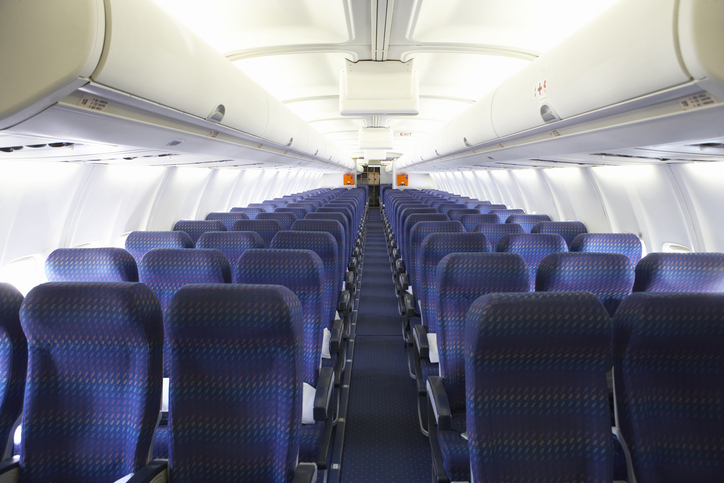(WASHINGTON) — Airline passengers hoping for a little more leg room or space on plane seats can tell the federal government how they feel for the next 90 days.
The Federal Aviation Administration (FAA) is asking for comment from the public for the next few months. It will then use that feedback to create a new standard minimum for airplane seat sizes.
This comes years after Congress ordered the FAA to create new minimum dimensions for airplane seats in its funding renewal in 2018. During that reauthorization, Congress mandated that the agency must issue a standard seat pitch, width and length. Some advocates said a change in minimum seat size could impact much of the flying public.
“Only about 50% of the population can fit in the seats and for men, only about 13% have shoulders that are narrower than the seats,” Paul Hudson, the president of FlyersRights.org and a member of the FAA Aviation Rulemaking Advisory Committee, said. “And you’ve got many people with various health conditions that are not flying because of these really cramped seats, so if the seats become more reasonable, that will open up a lot more customers for the airlines.”
And while the result might mean more comfortable travel for flyers, it could also mean safer skies. Hudson says that cramped legroom can lead to conditions such as clotting or deep-vein thrombosis during travel.
“Well, what we believe should happen is there should be minimum state standards that allow for 95% of the population to fit in the seats,” Hudson said. “And for the other 5%, there should be larger seats available with a proportional additional cost, but nothing excessive.”
A minimum seat size and amount of leg room could make it easier for passengers to evacuate during an emergency.
“Federal officials want to make sure that there is enough room on airplanes that in the event of an emergency, folks are able to quickly and safely get off of that airplane,” Scott Keyes, the founder of Scott’s Cheap Flights, said. “And if seats are too cramped together, if there’s so little leg room that it’s near impossible to squeeze out of your seat, that is going to make it especially difficult to evacuate in case of emergency.”
Keyes said that over the past decades, the size of many airplane seats has gotten smaller.
“Americans, in general, have been getting a bit larger and seats on airplanes have been getting a bit smaller,” Keyes said. “And so that mismatch, I think, is reasonable for critics to say, ‘Well, do the current seats, [does] the current setup of airlines really reflect what the flying public can expect these days and what their needs are?"”
The FAA has been conducting airplane evacuation tests at its facilities in Oklahoma, but critics say those drills might not paint an accurate picture of what a real-world emergency would entail.
In that report, more than 60% of participants thought it would be difficult or very difficult to get out of a middle row and middle seat quickly. The conclusion of those drills found that “while airplane seat size may remain unchanged,” a larger and heavier U.S. population might impact safety.
The drills have drawn some criticism because the participants were limited to able-bodied participants whose ages range from 18 to 60. Hudson also said that people weighing more than 250 pounds and people with other conditions who would be on a normal flight were not part of the tests.
In its request for public comment, the FAA said it is seeking input on seat dimensions from groups who were not part of the drills, including “children, people over 60 and individuals with disabilities.”
But, the FAA emphasized that for the agency, this change is about safety, and it is asking for data and information that is “helpful.” It is not requesting comments about “passenger comfort or convenience,” the FAA said.
Copyright © 2022, ABC Audio. All rights reserved.












